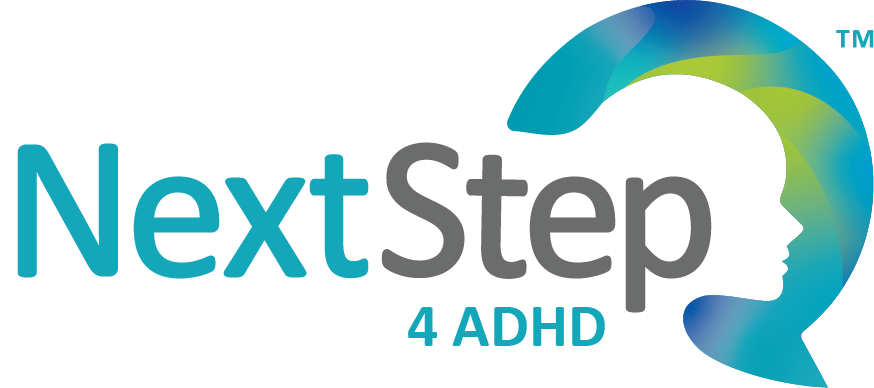
3 Strategies for Organizing Your Thoughts (and Increasing Your Productivity)
Are You Part of the 54%?
A survey conducted by the National Association for Professional Organizers found that a whopping 54% of Americans struggle with disorganization and clutter. If you have ADHD, it can be even more challenging to overcome the clutter.
But disorganization isn’t limited to just physical clutter. Disorganization can apply to your thoughts too. If you feel like your brain is flooded with too many thoughts, you’re not alone.
In this post, we’ll cover:
- How our brains are like computers
- 3 simple tips for organizing your thoughts
- How to reboot your brain to increase productivity
- How we can help you take your planning skills to the next level
Your Brain Is a High-Tech Computer

Your brain is so amazing. Just think of all of the bodily functions and processes your brain is controlling – without you even telling it to! For example, your brain stem controls involuntary muscle movements such as the beating of your heart.
But – like a computer – sometimes the brain can get bogged down with too many thoughts, or files. When the brain is overloaded, it can slow down and lose focus. When this happens, you might say “your brain feels fried” or that “you’re just frozen.” An overloaded brain can often lead to missed deadlines, forgotten details, and difficulty concentrating.
And what happens when your computer gets frozen? You re-boot!
Re-Boot Your Brain
There are many strategies for organizing your thoughts and re-booting your brain, but today, we’ll focus on three ways you can empty your thoughts, re-organize your brain, and improve your focus.
A restructured mind is much more efficient than a constantly overloaded one.
3 Simple Ways to Organize Your Thoughts
Choose the Right Time
Organizing your thoughts isn’t really something you can do while working out, washing dishes, or trying to work. It’s important to set aside time specifically dedicated to organizing your thoughts.
Find the time that works best for you. For example, you may find that first thing in the morning works great. On the other hand, you might want to sip a cup of coffee or a take quick walk around the block to allow your brain time to wake up.
You only need a few minutes, but make sure you’re fully present during this time.
Select Your Method of Logging Your Thoughts
This step focuses on getting your thoughts out of your mind and onto paper (or into a note-taking app.) This allows you to “park” your ideas until you have time to thoroughly address them.
Ideas for logging your thoughts include:
- A notebook
- A planner
- Note apps on your phone or tablet
- Productivity apps or programs (such as OneNote)
- Voice recording feature on your phone
Whatever tool you choose, make sure it’s tangible. Keeping this list in your head can clog up your brain power.
Get Your Ideas Out
If you have too many thoughts swirling in your head, it’s hard to focus on any one of them. During this step, write out everything on your mind, including:
- To-do list items
- Thoughts
- Questions
- Ideas for future projects, etc.
At first, you don’t have sort these items. The first step is to get the ideas out of your head. Once all of your thoughts are on paper, it will be easier to sort them into actionable items.
Now that your thoughts are written out, ask yourself which items are necessary for today.
If the answer is yes, then follow these steps:
- Add that item to your to-do list for the day
- Cross it off as you complete it!
If the answer is no, then follow these steps:
- If your thought is an “idea for a project”, then add it to a file specifically dedicated to your ideas that you can return to when you have more time.
- If your thought is a more of a “question”, then schedule time later to research the problem, or send out an appropriate email, or make a phone call about the problem, etc.
- If your thought is a task that needs to be dealt with soon (but just not today), then schedule it in your planner or calendar for the appropriate day.
You can repeat these steps daily or even twice a day, if needed.
A Small Habit That Works
When you’re able to organize your thoughts, you’re no longer constantly badgered by swirling thoughts in your head. Getting your thoughts out allows you to organize them. In the end, this one small habit helps you quiet your mind, decrease your stress levels, and spend more time doing the things you love. You’ll be better able to focus, concentrate, and prioritize your attention
We Can Help You Get Organized
Planning and organizing are two very important executive function skills. These are skills that many people with ADHD struggle with, but these are skills that can be taught. At Next Step 4 ADHD, you can learn the skills you need to get organized with our 5-week, online course: Planning and Organizing for Adults.
Planning and Organization for Adults is a 5-week interactive course that includes skill-building lessons and activities, live webinars, and personalized coaching support. If you are struggling with tasks such as paying your bills, showing up to appointments, or remembering to do certain items; this program offers you an opportunity to learn and apply tactics taught to you by Keri Knight, LCSW so that you can live a happier, stress-free life.
Want to Learn More?
Dealing with ADHD on your own can be difficult, but with our innovative approach, you’re never alone. We are here to guide you with your next steps. If you’d like to learn more about us or set up a confidential discussion with one of our professionals, you can complete this form for a virtual appointment. Alternatively, call our Louisville, Kentucky office at (502) 907-5908.
Related Posts
What’s Sleep Hygiene? (Plus, A Guided Meditation to Help You Relax)
Sleep is one of the most basic needs of humans, and getting quality sleep is...
5 Signs that ADHD Is Impacting Your Child’s School Performance
Is ADHD affecting your child's school performance? 1. Your Child Needs to Move...



